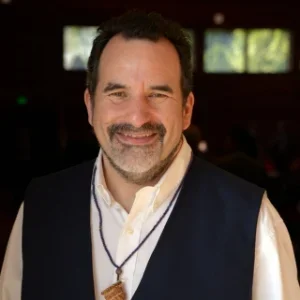Artists
Braided River is privileged to work with a host of talented storytellers—artists, photographers, writers, and designers to bring to lift award-winning books, films, and exhibits that share the spirit, beauty and complexity of the wild and sacred lands of Western North America.
David Moskowitz
Photographer, wildlife biologist, and tracker David Moskowitz is the author of Caribou Rainforest, Wildlife of the Pacific Northwest, and Wolves in the Land of Salmon. His work has been featured in the New York Times, Sierra, High Country News. Learn more at davidmoskowitz.net and @moskowitz_david.
“Rivers are constantly changing, but like many natural systems around the globe, this river system is in the process of profound evolution once again—driven by human culture.”
“It is one thing to be an author, and quite another to be a Braided River author. With their books, Braided River truly builds community, and seeks to educate, inform, and create a better world for all beings. As an author, I can’t think of anything more satisfying — or worthwhile.”
Lynda Mapes
Author of ORCA: Shared Waters, Shared Home and Seattle Times journalist.
Project Photographers
Project Authors
Contributing Authors
Rosemary Ahtuangaruak, Richard Alley, Ted Alvarez, Margaret Atwood, Bruce Babbitt, Angelo Baca, Stacy Bare, Rick Bass, Dylan Boyle, Stephen Brown, Jim Campbell, Tom Campion, Jimmy Carter, Gino Casassa, Anne Castle, Douglas Chadwick, Genevieve Chase, Quannah Chasinghorse, Yvon Chouinard, Broughton Coburn, Philippe Cousteau, Kit DesLauriers, Patrick S. Druckenmiller, Sylvia Earle, Gretel Ehrlich, Exequiel Ezcurra, Jeff Fair, John W. Fitzpatrick, Jonathan Franzen, Loni Greninger, David Guterson, Bonnie Henderson, Karsten Heuer, Jon Hoekstra, Alison Holloran, Robert Max Holmes, Denver Holt, John R. Horner, Sarah James, Michael Jamison, Nick Jans, Kimberly Kaufman, Kenn Kaufman, Frank Keim, Robert F. Kennedy Jr., Ted Kerasote, Lenny Kohm, Martha Kongsgaard, Harvey Locke, Princess Daazhraii Lucaj, Bishop MacDonald, Greg MacGillivray, Mark Magana, Charles C. Mann, Rue Mapp, Peter P. Marra, Fran Mauer, Peter Matthiessen, Paul Miller, Debber Miller, Gary Morishima, Susan Natali, Richard Nelson, Lorraine Netro, Clare Nielsen, Michael Parr, Bella Parra, Jeffrey Parrish, Maria Parker Pascua, Wayne Peterson, David Quammen, Gleb Raygorodetsky, Senator Harry Reid, Rick Ridgeway, Theodore Roosevelt IV, Wendy Sampson, John Schade, George Schaller, Stan Senner, Fawn Sharp, Cynthia Shogan, David Allen Sibley, Ian Stirling, David Suzuki, Francine Swift, Gary Tabor, Robert Thompson, Jamie R. Valadez, Brooke Williams, Terry Tempest Williams, Cynthia Wilson, Mark Wilson, Heather Zichal, and more
Contributing Photographers
Miho Aida, Subhankar Banerjee, Paul Bannick, Gary Braasch, Brandon Cole, Patrick Endres, John Ferris, Gemina Garland-Lewis, Michio Hoshino, Richard Kahn, Steven Kazlowski, Arthur Morris, Pat O'Hara, Steve Ringman, Hugh Rose, Joel Sartore, Dave Shreffler, Paul Souders, Gerrit Vyn, Art Wolfe, Larry Workman, Steve N. Zack, and more
Contributing ARTists
Maria Coryell-Martin, Fiorella De La O, Molly Hoshimoto, Claudia Castro Luna, William S. Merwin, David Allen Sibley, Martyn Stewart, Ray Troll, and more









































